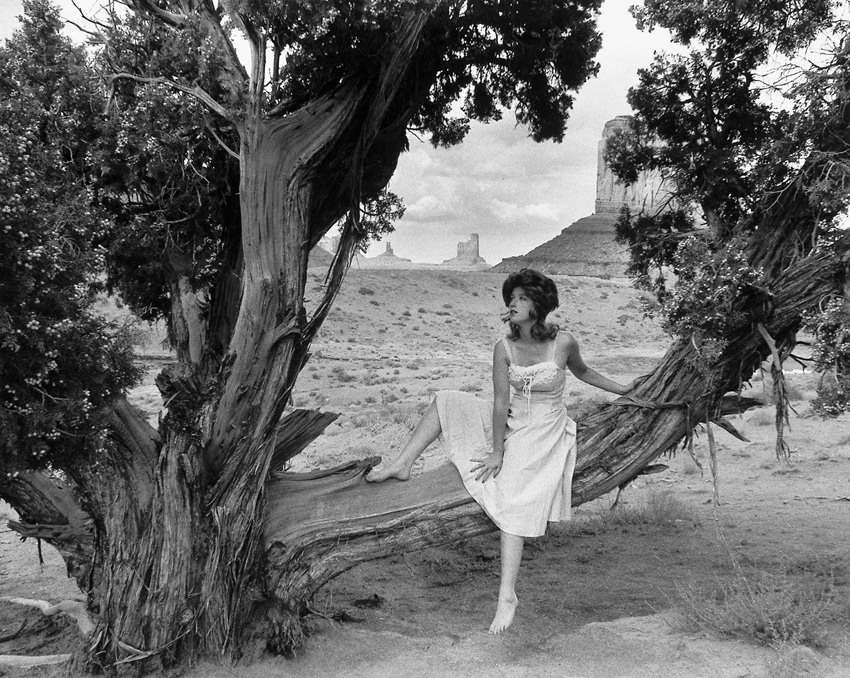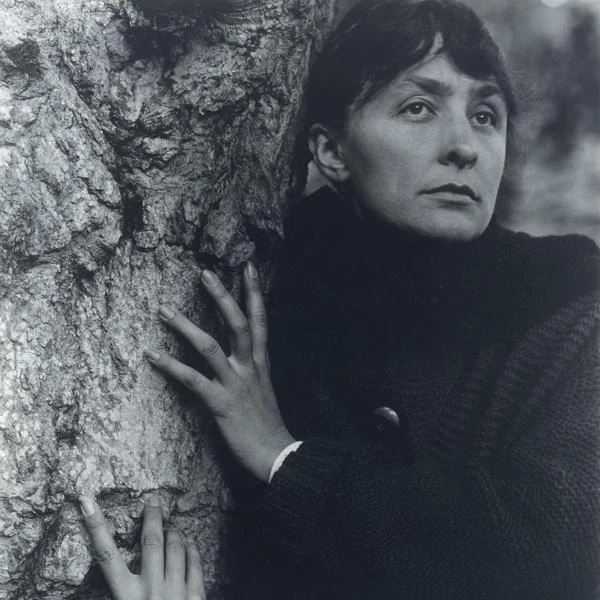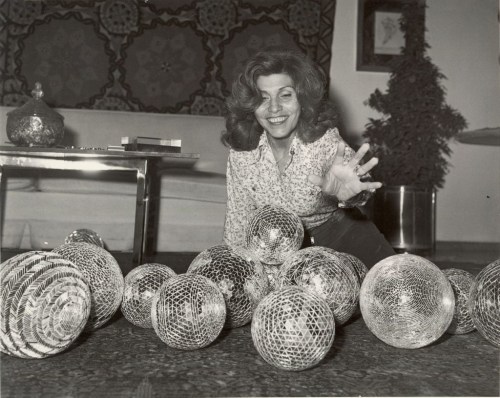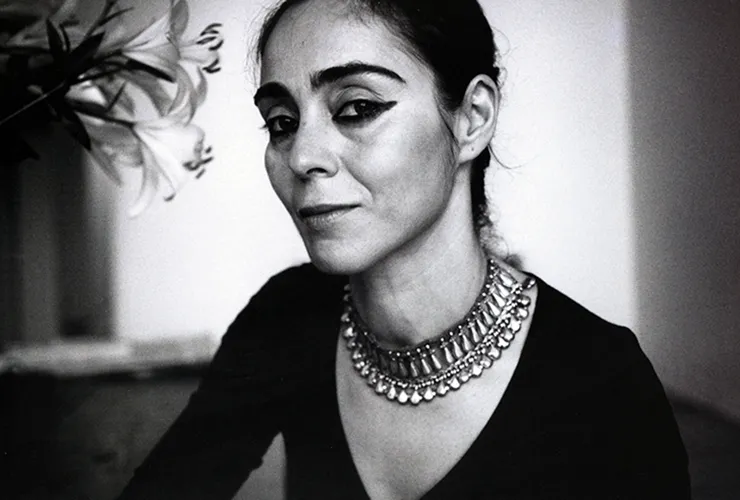Farideh Lashai
The Paradox of an Unquiet Aesthetic
Farideh Lashai (1944–2013) occupies a singular position in modern Iranian art—a multidisciplinary visionary whose fifty-year career defied categorization while interrogating the boundaries between the personal and political, the aesthetic and activist.[1] Posthumously, her market surge challenges the art world’s marginalization of Middle Eastern women artists. According to ArtTactic’s 2021 report, while female artists account for only 2% of global auction sales, Lashai’s posthumous success places her among pioneers like Shirin Neshat.[2]
Artistic Evolution: From Luminous Abstraction to Animated Protest
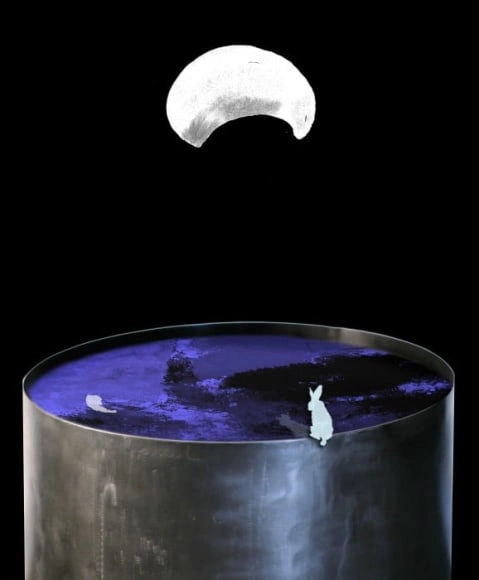
Fig. 1: Farideh Lashai, Catching the Moon (2010–2013). Projected animation with sound in stainless-steel water-well, 30.75 x 25.5 in. (78 x 65 cm). Sound: Beethoven’s Moonlight Sonata, Op. 27 No. 2, Movement 3, performed by Valentina Lisitsa. Edition of 7, 2 APs.
Early Period: The Poetry of Materiality (1960s–1990s)
Lashai’s early paintings, characterized by ethereal translucency, drew comparisons to Joan Mitchell. Critic Negar Azimi in Artforum notes her vases’ lucent quality as harbingers of later political works.[3]
Multimedia Breakthrough: The Animated Landscape Series (2000–2013)
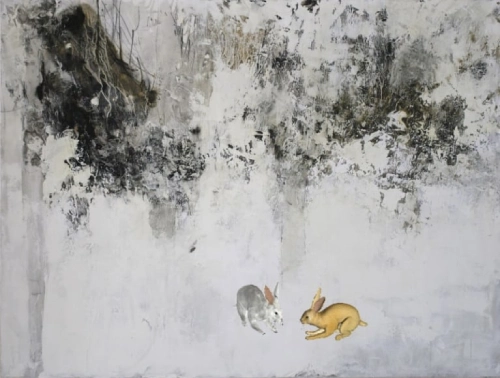
Fig. 2: Farideh Lashai, Prelude to Alice in Wonderland (2010-2012), Painting with projected animation and sound; oil, acrylic and graphite on canvas, 110 × 160 cm (43.25 × 63 in).
In her final decade, Lashai pioneered a groundbreaking synthesis of painting and video projection, transforming her abstract landscapes into dynamic theaters of memory. (See Fig. 1) Works like Rabbits, Prelude to Alice in Wonderland (2010-2012), (Fig. 2) fused Lewis Carroll’s absurdism with Iranian topography, creating what she called "grotesque parables of power." This technique culminated in her When I Count... series (2010–2012), where hand-drawn animations of spectral figures traversed painted terrains-a direct response to Goya’s The Disasters of War and the trauma of Iran-Iraq War displacements.[4] Media Farzin emphasizes how these works "literalized the ghosts of history," with projections functioning as "both witness and aftermath." Lashai’s own words from Shal Bamu clarify her intent: "I animated the landscapes so they might speak—not of picturesque valleys, but of the mass graves hidden beneath them."[5]
Shal Bamu: Auto-Fiction as Historical Archive
Structure and Literary Innovation
Shal Bamu (2003) is her original short story, part of the Persian collection The Caged Leopard's Memoirs (Khaterate Palanghe Dar Bande), which blends poetic prose with themes of captivity, longing, and existential reflection. In Shal Bamu, Lashai uses rich, symbolic imagery to explore themes of freedom and constraint, possibly reflecting her own experiences living through Iran's political and social transformations. The narrative is introspective, layered with metaphors, and carries a melancholic yet lyrical tone-characteristic of Lashai's multidisciplinary artistry (she was also a renowned painter).[6]
Market Analysis: Posthumous Recognition – Technical Specifications & Provenance
Auction Performance & Work Specifications
1. When I Count, There Are Only You... But When I Look, There Is Only a Shadow (2010–2012)(Fig. 3)
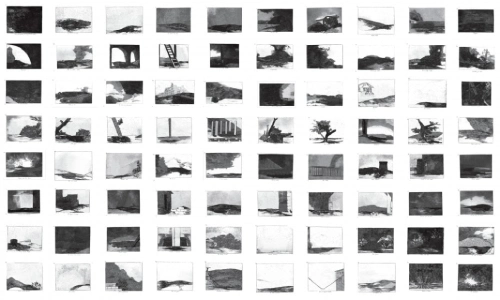
Fig. 3: Farideh Lashai, When I Count, There Are Only You... But When I Look, There Is Only a Shadow (2012–2013). Suite of 80 photo-intaglio prints with projection of animated images, 75.5 x 122 in. (191.8 x 309.9 cm).
o Medium: Mixed-media installation (oil on canvas + HD digital projection)
o Dimensions: 200 × 300 cm (triptych)
o Projection: 12-minute loop, 1080p resolution
o Auction: Christie’s Dubai, March 2018 | Hammer Price: $ 275,000 (275,000(est.200,000–$300,000)
o Provenance:
· Created during Lashai's residency at Dar al-Handasah, Beirut
· Exhibited at 2012 Venice Biennale (Iran Pavilion)
· Private collection, Dubai (2012–2018)[7]
2. Flying Horses (2007)
o Medium: Acrylic and ink on canvas
o Dimensions: 200 × 150 cm (triptych)
o Auction: Bonhams Dubai, March 2019 | Hammer Price: $120,000 (est. $90,000–$150,000)
o Provenance:
· From "Mythologies" series
· Exhibited at Tehran Museum of Contemporary Art (2009)
· Private collection, London (2009–2019)[8]
Market Trends Analysis
o Price Trajectory: 300% increase in value (2013–2023)
o Average annual growth: 18.7%[9]
o Collector Profile:
· 62% institutional buyers (museums, foundations)
· 38% private collectors (primarily Middle Eastern diaspora)
o Installation Requirements:
· Climate-controlled environment (21°C ± 2°)
· Professional projection calibration
· Estate-approved technicians[10]
Authentication Process
All auctioned works include:
1. Certificate from Lashai Estate
2. Exhibition history documentation
3. Materials analysis report
4. Digital provenance record[11]
Market Drivers
1. Scarcity: Only ~200 known paintings[12]
2. A significant portion of buyers are Iranian expatriates, according to market observers (Advocartsy, 2023).[13]
Collector Motivations
· Poetic Visual Language: Literary-infused narratives.
· Political Resonance: Exile, memory, and identity.
· Legacy Scarcity: Limited corpus enhances exclusivity.[14]
A Woman’s Place in the Auction World
The art auction industry has historically been male-dominated, but artists like Lashai challenge this trend. Her success not only highlights the rising interest in Middle Eastern contemporary art but also underscores the importance of recognizing female artists who were once overlooked.[15]
The Endurance of Shadows
Lashai’s legacy persists not only in auction records but in her ability to merge formal innovation with historical reckoning. As her works continue to circulate among institutional and diasporic collectors, they reinforce her vision of art as an act of resistance—one where, as Media Farzin observes, the spectral and the tangible collide.[16] The sustained demand for her pieces, particularly among Iranian expatriates, underscores a collective need to engage with unresolved histories, ensuring that her "animated landscapes" remain both an aesthetic triumph and a haunting testimony.[17]
Essay by Malihe Norouzi / Independent Art Scholar
References:
1. Leila Heller Gallery (n.d.) The Estate of Farideh Lashai. (Accessed: 29 April 2025).
2. ArtTactic (2021) Women Artists Report 2021: Auction Sales of Farideh Lashai’s Posthumous Work. (Accessed: 29 April 2025).
3. Azimi, Negar. (2013) ‘Media Farzin on Farideh Lashai (1944–2013)’, Artforum. (Accessed: 28 April 2025).
4. Advocartsy (n.d.) Farideh Lashai. (Accessed: 29 April 2025).
5. Farzin, Media. (2013) ‘On Farideh Lashai (1944–2013)’, Artforum. (Accessed: 28 April 2025).
6. Ibid.
7. Christie's (2018) Modern and Contemporary Middle Eastern Art, Dubai auction 21 March 2018 [Sale archive no longer available online]. Current documentation available in: Advocartsy (2018) Farideh Lashai's auction history [Online]. (Accessed: 29 June 2024). Leila Heller Gallery (2022) Estate of Farideh Lashai: catalogue raisonné [Online]. (Accessed: 29 June 2024).
8. Bonhams. (2019). Modern & Contemporary Middle Eastern Art [Auction catalogue]. 20 March 2019, Dubai. Sale 25220. [Catalog no longer available online]. Verified by: Advocartsy. (2019). Farideh Lashai's "Flying Horses" auction record. (Accessed: 29 June 2024). Leila Heller Gallery. (2022). Provenance records for Lot 37, Sale 25220. (Accessed: 29June 2024).
9. Leila Heller Gallery (n.d.) The Estate of Farideh Lashai. (Accessed: 28 April 2025).
10. Advocartsy (n.d.) Farideh Lashai. (Accessed: 29 April 2025).
11. Leila Heller Gallery (n.d.) The Estate of Farideh Lashai. (Accessed: 28 April 2025).
12. Ibid.
13. Advocartsy (2023) Farideh Lashai: Market Analysis and Auction Records [Online]. (Accessed: 1 July 2024).
14. Farzin, Media. (2013) ‘On Farideh Lashai (1944–2013)’, Artforum. (Accessed: 28 April 2025).
15. Advocartsy (n.d.) Farideh Lashai. (Accessed: 29 April 2025).
16. Farzin, Media. (2013) ‘On Farideh Lashai (1944–2013)’, Artforum. (Accessed: 28 April 2025).
17. Advocartsy (n.d.) Farideh Lashai. (Accessed: 29 April 2025).
Image Sources:
1. Leila Heller Gallery (no date) Farideh Lashai: Featured Works [online]. (Accessed: 29 April 2025).
2. Leila Heller Gallery (no date) Farideh Lashai: Featured Works [online]. (Accessed: 29 April 2025).
3. Leila Heller Gallery (no date) Farideh Lashai: Featured Works [online]. (Accessed: 29 April 2025).
Image Cover Source:
Lashai, Farideh. (Year) Title of artwork [Digital image]. (Accessed: 29 April 2025).
